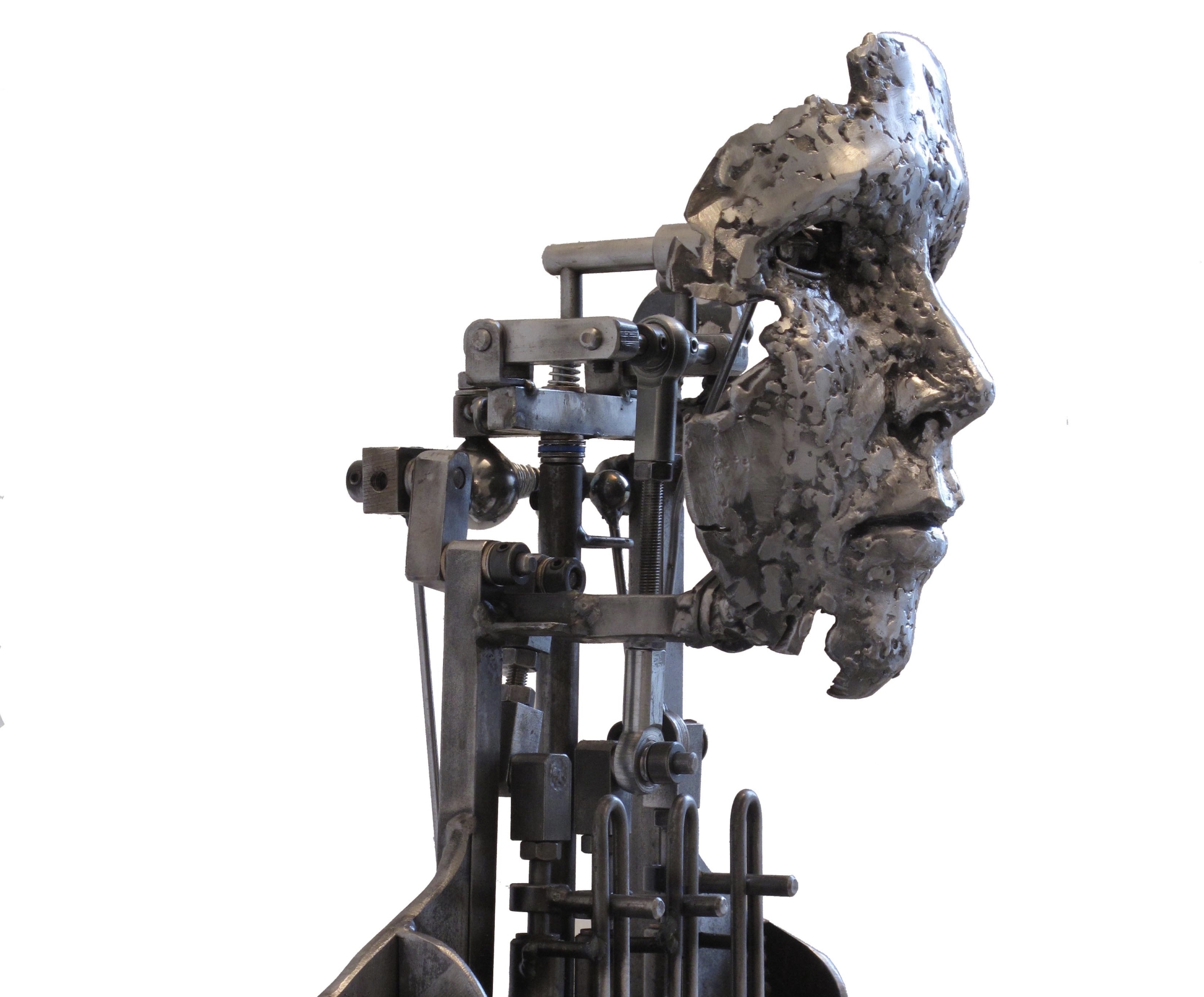
Editors Note: You might wonder why a story about a Long Island City art exhibit is in West Side Rag. It’s because many of the exhibitors are Upper West Side women who work in the medium of steel, who are welders as well as artists. The story was sent to us along with the accompanying photographs. Women welders have a long tradition in America, starting in 1917 during World War I. “Women were needed to fill jobs in the workforce. That’s when The Society of Women Welders was formed,” according to a press release. “Presently, it is a misconception that there are few women welders in the arts.”
By Christopher Brimer
Art. Passion. Steel. Women wielding 6,000°F welding torches. These compelling elements power a new sculpture exhibition called “Behind the Mask: The Art of Women Welders,” currently on view in Long Island City. The show is a knockout, well worth a trek under the East River.
Upper West Side women figure prominently among the 29 exhibitors at the Culture Lab LIC, a multi-use performance and exhibition space. Fifty pieces were selected for the event. Steel is the primary medium, but the works span a variety of styles, perspectives, and materials.
“The impetus of the show was to dramatize that not all welders are men,” said Karen Kettering-Dimit, one of the organizers. “We were very choosy about the pieces that resonated with us.”
A featured piece was created by Alexandra Limpert. Limpert grew up within the gravitational pull of Zabar’s and spent years developing her skills in figurative animatronics working on window displays at high-end stores like Saks and Bergdorf Goodman. The extraordinary results can be seen in her sculpture “Oracle,” which combines a lifelike face and a mechanical base. By turning a crank, a visitor can make the sculpture’s eyelids open and close while its gaze moves from side to side, like it is searching the room. The haunting effect was inspired by the mother-of-pearl eyes in an ancient bronze sculpture Limpert saw in Athens.
“I thought if I stared at them long enough I would see their eyes move back and forth, but it never happened, so I decided to build my own version where the eyes did move,” she said. Limpert wants her work to evoke a little of the awe she felt in the presence of those ancient gods, like there’s a spirit, there’s someone in there, an inner life.”
Awe isn’t the only emotion that the sculptures at Culture Lab try to evoke. Patricia Talbot, a Swiss native who currently lives in the low 100s off of West End Avenue, has used her abstract pieces to help her process the pain of the pandemic. Talbot doesn’t like to label her pieces with descriptive names “so that everyone can see his own interpretation.”
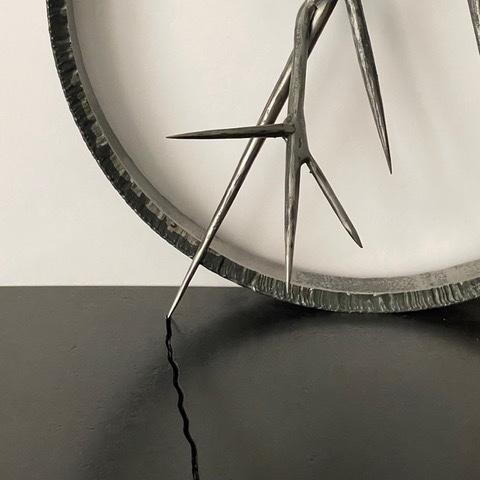
However, her unevocatively named “No 736/1” sends a clear message by incorporating the distinctive shapes of the locust tree thorns she discovered while walking in Marcus Garvey Park. Locust thorns are one the botanical world’s most vicious shapes.
“It’s the pain we went through in the pandemic,” she says. “We lost people during the pandemic, we were separated from people, we were separated from family.”
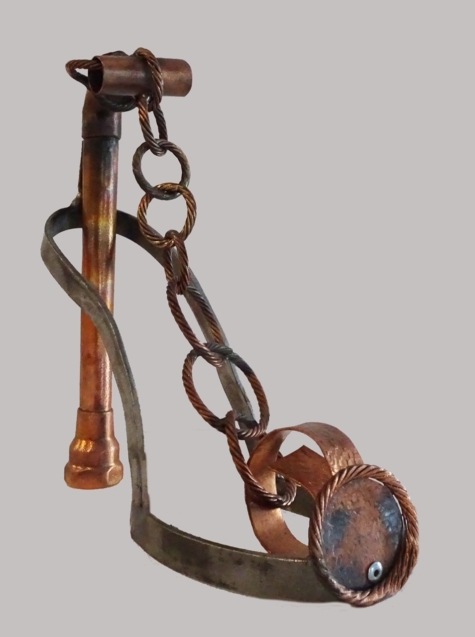
Of course, not all the works are sober. Wendy Kaplan Friend makes witty metal shoes (including a pair of flower studded gladiator boots).
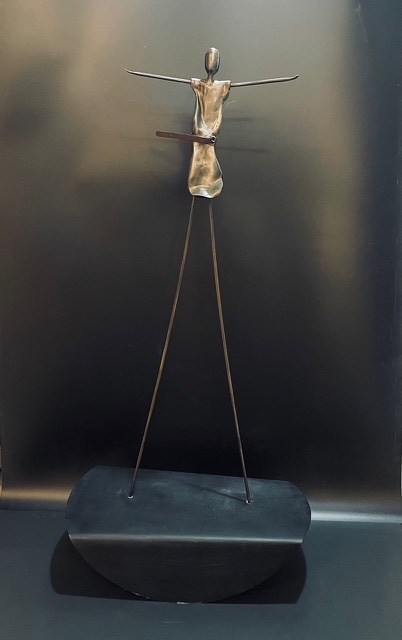
Gaelle Hinzty-Marcel has created the elegant, whimsical “Balance.” When touched, “Balance”’s elongated female figure rocks gently on a curved base until she inevitably rights herself. It took Hintzy-Marcel weeks to perfect the movement. “This piece is so important to me,” she says. “Balance is so important in life.”
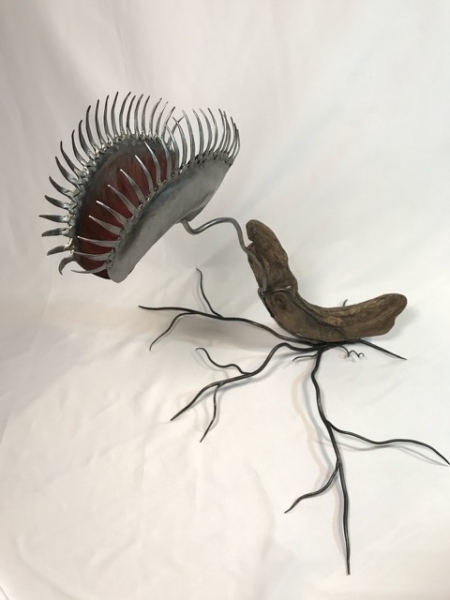
Marsha Powell is showing the rather sci-fi, multi-medium “Venus,” a sculpture that marries a spiky, steel Venus flytrap and driftwood. Powell sketched the carnivorous flower while waiting for a stress test in her doctor’s office. It’s not clear if the paper gown she was wearing at the time enhanced her creativity.
“I like pointy aggressive things,” she says, “It was a lovely drawing, but to convert it into a sculpture ran the risk of it looking too much like a garden ornament.”
Part of the solution to her creative dilemma came during a Hudson River stroll where she discovered interesting pieces of driftwood. Tackling the structural question of how to make the work stand led her to consider different bases.
“Originally I thought of feet or flippers but I ultimately came up with roots,” she says. “I plan, but along the way a piece chooses its own shape.”
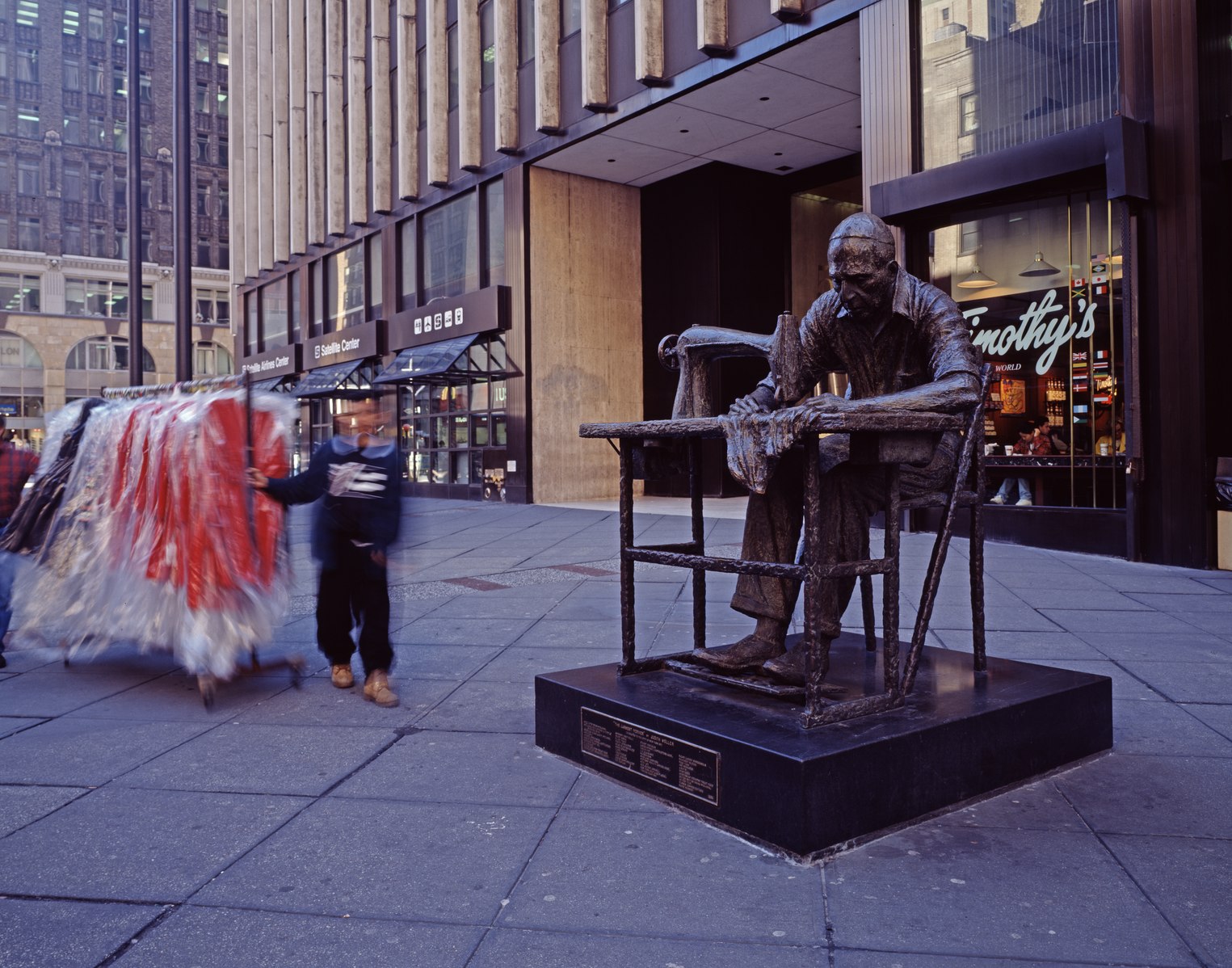
Artists in the show range in age from their 80s to their 20s. Judith Weller, 86, contributed a playful pair of dancing insects “Steel Ants Tango”. The piece is a sharp contrast to her best-known work, an 8-foot-tall bronze at 39th Street and 7th Avenue. Weller used her own father as the inspiration for the Garment Worker, an iconic sculpture that depicts a Jewish tailor stooped over a treadle sewing machine. It commemorates the labor of thousands of immigrant workers who toiled in the area’s garment industry.
“I’m proud to be included in this group,” says Powell. “It’s very high powered.”
On view through April 28 at Culture Lab LIC.
Subscribe to West Side Rag’s FREE email newsletter here.









Thanks for the interesting piece, Christopher. I have always loved Judith Weller’s “Garment Worker,” whose artistry is as important as its meaning. I would love to know more about where and how these artists work. Welding, if i recall the welders in my family, requires fireproof space, heavy equipment; gloves, goggles and helmet; respirators, and maybe a gas line. Not something to try in your West Side studio apartment, I think.
Great piece – gonna go see! Thanks for the intro to these neighbors of steel! ( Mujers de metal?)
Thank you for covering this show! I love the commentary here on the women welders and specifically focusing on the talent in the show!
I’m one of the out of state artists in the show, it’s been such an honor and a pleasure to show alongside such fabulous artists! I love being apart of such a monumental exhibition! Especially in New York! My family is all from here, however I live out of state at the moment.
Thanks again for a lovely article!
Marvelous review of so many super works.